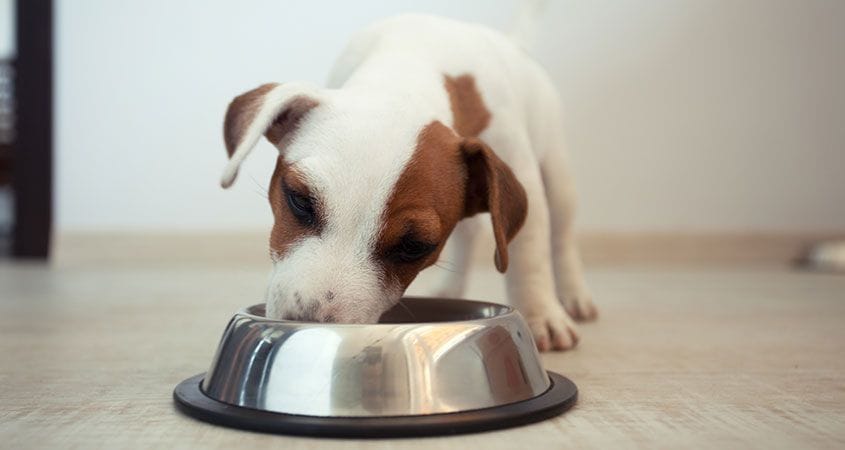The Ultimate Guide to Creating a Puppy Feeding Chart
Providing good nutrients is key to your puppy’s growth and development. Based on my experience of raising a puppy I will try to discuss all important points that will guide you to create a puppy feeding chart that will lay down the foundation for a healthy and happy puppy.
Understanding Your Puppy’s Nutritional Needs
Ah, the heart of the matter – understanding what makes those little furballs tick nutritionally. Picture this: your adorable pup, with its boundless energy and those soulful eyes, relies on you to provide them with the nutrients that will fuel their growth and shape their future well-being.
The Building Blocks of Growth
Just like a construction project needs the right materials, your puppy’s body needs a balanced combination of nutrients to grow strong and healthy. Protein, often called the body’s building blocks, is a star player here. It aids in muscle development, cell repair, and overall growth. Fat is the energy source that keeps those playful paws moving, while carbohydrates provide the fuel needed for everyday activities.
The Vitamins and Minerals Orchestra
Imagine vitamins and minerals as the conductors of an orchestra, ensuring all the instruments (your puppy’s bodily functions) play harmoniously. These micronutrients are vital for their immune system, bone development, and maintaining a shiny coat. Vitamins like A, D, and E, along with minerals such as calcium and phosphorus, create the symphony that supports a pup’s overall health.
Puppies vs. Adult Dogs
Think of puppies as little athletes training for life. Their growth rate is much faster than that of adult dogs, which means they need more calories and nutrients to sustain their energy and development. Puppy food is specially formulated to meet these unique needs. It’s like a tailor-made suit designed to fit your pup’s growing body – snug, comfortable, and perfectly suited to their stage of life.
Tailoring Nutrition to Your Puppy’s Breed
Just as each breed has its distinct traits, they also have varying nutritional requirements. Larger breeds often need controlled growth to prevent stress on their developing joints, while smaller breeds require energy-dense meals to keep up with their lively personalities. Understanding your puppy’s breed characteristics can help you fine-tune their diet to set them up for a healthy future.
The Role of DHA
Imagine DHA (docosahexaenoic acid) as a superhero cape for your puppy’s brain and vision development. This omega-3 fatty acid is found in mother’s milk and some puppy foods. It supports cognitive function, making your pup a quick learner, and promotes healthy vision development – so they can spot those squirrels from a distance!
In a nutshell, understanding your puppy’s nutritional needs is like discovering the secret recipe to nurturing a vibrant and thriving companion. They’re not just eating; they’re building the foundation for their lifelong health and happiness. So, when crafting that puppy feeding chart, remember that every nutrient is a key ingredient in their delicious journey of growth.
Factors to Consider When Creating a Puppy Feeding Chart
Creating a puppy feeding chart is like designing a roadmap for your little explorer’s nutritional journey. It’s not just about filling a bowl; it’s about ensuring your pup’s growth and well-being are supported every step of the way. Let’s dive into the factors that deserve your attention when crafting this crucial chart.
1. Age, Breed, and Size: The Golden Trio
Imagine age, breed, and size as the three pillars upon which your puppy’s feeding chart stands. Puppies of different ages have varying nutritional needs, just like how a toddler’s diet differs from a teenager’s. Similarly, different breeds have their unique growth rates and potential health concerns. Larger breeds, for instance, need careful growth management to prevent joint issues, while smaller breeds may require more calories for their rapid metabolism.
2. Growth Stages: The Plot Twists
Puppyhood isn’t a linear journey; it’s more like a series of exciting plot twists. Understanding growth stages is crucial. There’s the puppy’s initial growth spurt, followed by periods of slower growth. These stages are like chapters in a book, and each demands a tailored approach. As your puppy reaches different milestones, their nutrient requirements change. This is where your feeding chart can truly shine by adjusting portions and ingredients to match their evolving needs.
3. Large vs. Small Breeds: Customized Care
Large and small breeds are like different genres of books – they have distinct characteristics that require specialized care. Large breeds, such as Great Danes, have unique challenges like a predisposition to hip dysplasia. For them, controlled growth is key, which means your feeding chart should focus on maintaining a steady rate of growth. On the flip side, small breeds like Chihuahuas have fast metabolisms, so their feeding chart may involve more frequent meals to keep their energy levels up.
4. Active Lifestyle: Fueling Adventures
Is your pup a ball of energy, always ready for a game of fetch? An active lifestyle demands an extra dose of energy in their meals. Just like a marathon runner needs more calories than a couch potato, an active puppy needs additional sustenance. Your feeding chart should account for their energy expenditure and provide the right balance of nutrients to fuel their escapades.
5. Allergies and Sensitivities: Special Considerations
Imagine allergies and sensitivities as plot twists in the puppy story. Some puppies may have food allergies or sensitivities that require special attention. Grain allergies, for example, may necessitate a grain-free diet. If you suspect your pup has allergies, consult your vet before designing the feeding chart. It’s all about ensuring their meals don’t just nourish, but also keep them comfortable and itch-free.
6. Consult the Experts: Your Puppy’s Personal Advisers
Crafting a feeding chart is a big responsibility, much like being a chef for a growing gourmet. Don’t hesitate to consult your pup’s personal advisers – the veterinarians. They’re like culinary experts, tailoring recommendations based on your pup’s unique needs. Your vet can guide you on portion sizes, ingredient choices, and any special dietary considerations your puppy might require.
Creating a puppy feeding chart is akin to writing a love letter to your pup’s health and happiness. It’s a tangible expression of your care and commitment. By considering these factors, you’re not just crafting a chart; you’re sculpting a path that leads to a vibrant and thriving companion, ready to conquer every adventure that comes their way.
Designing Your Puppy Feeding Chart
Now comes the fun part: designing the feeding chart itself. But wait! Before you jump into the deep end, consult your veterinarian. They’re the Sherlock Holmes of your puppy’s health and can guide you in crafting a chart tailored to your pup’s unique needs. Portion control is a key factor here. It’s tempting to let those puppy eyes sway you, but sticking to appropriate portions prevents overfeeding and maintains a healthy weight.
Choosing the Right Puppy Food
The supermarket aisles are packed with options, and choosing the right puppy food can feel overwhelming. Commercial puppy food and homemade diets each have their merits. While commercial options are formulated to meet specific nutritional needs, homemade diets offer a personal touch. Whichever route you choose, be an ingredient detective. Look for high-quality protein sources, whole grains, and a balance of nutrients.
Transitioning to Solid Food
Remember when your pup transitioned from an adorable milk guzzler to a curious solid food explorer? That’s a significant phase. Introduce solid food gradually, giving their digestive system time to adjust. Weaning usually starts around three to four weeks of age. Softening dry kibble with warm water can help ease the transition. It’s like their culinary training wheels as they discover the joys of munching.
Common Feeding Mistakes to Avoid
We’ve all been there – those innocent eyes begging for an extra treat. But overfeeding can lead to obesity and a host of health issues. While we’re at it, let’s talk about certain foods that are big no-nos for your pup, like chocolate and grapes, which can be toxic. Keep a watchful eye on portion sizes and treat frequency. Remember, moderation is key!
Monitoring Your Puppy’s Health and Growth
A well-fed pup is a happy pup, and their health often reflects that. A shiny coat, bright eyes, and an abundance of energy are signs that your furry friend is thriving. If you notice anything unusual – like sudden weight loss or a decrease in appetite – consult your vet. Think of your pup as a unique individual; what works for one might not work for another.
Adapting the Feeding Chart as Your Puppy Grows
Time flies, and so does your pup’s growth. As they transform from tiny furballs to lively companions, their nutritional needs evolve. Don’t be surprised if you need to adjust the feeding chart as your pup grows. The rambunctious puppy stage might require a bit more fuel, while the transition to adulthood calls for moderation. Keep an eye on their body condition and consult your vet for guidance.
Conclusion
Congratulations! You’re now armed with the knowledge to create a puppy feeding chart that suits your furry friend’s needs like a tailored suit. Remember, a well-balanced diet isn’t just about meals; it’s about nurturing a healthy, happy companion who will stick with you through thick and thin. So go ahead, whip up that feeding chart, and watch your pup thrive like never before!






